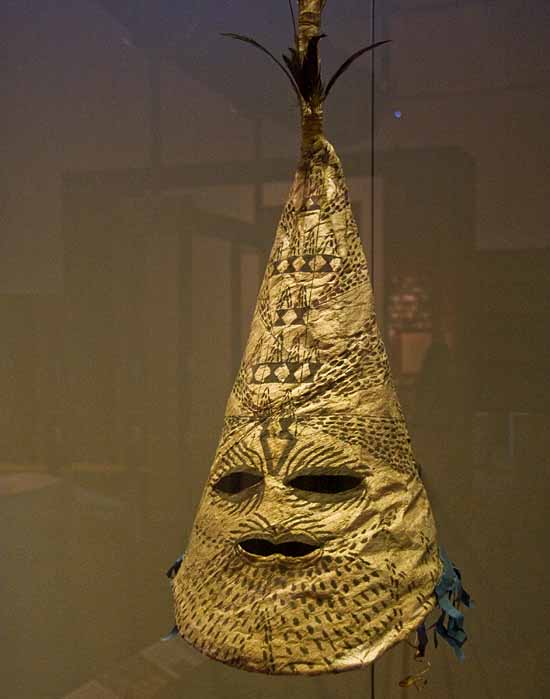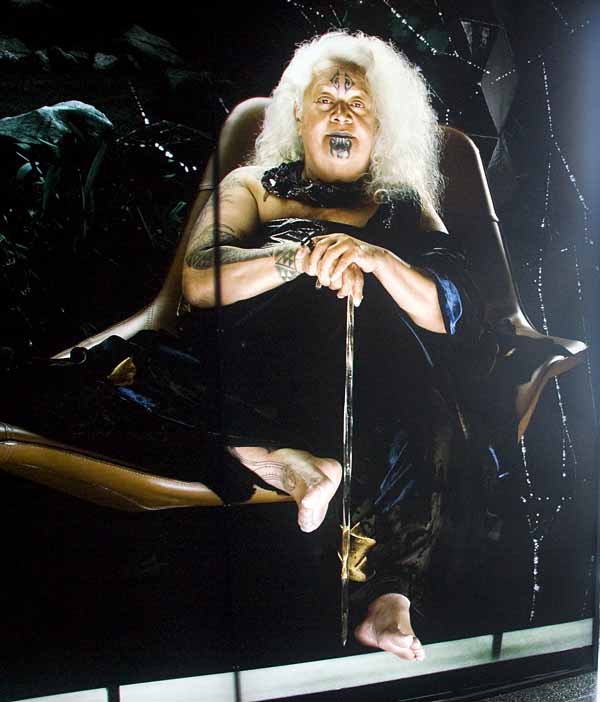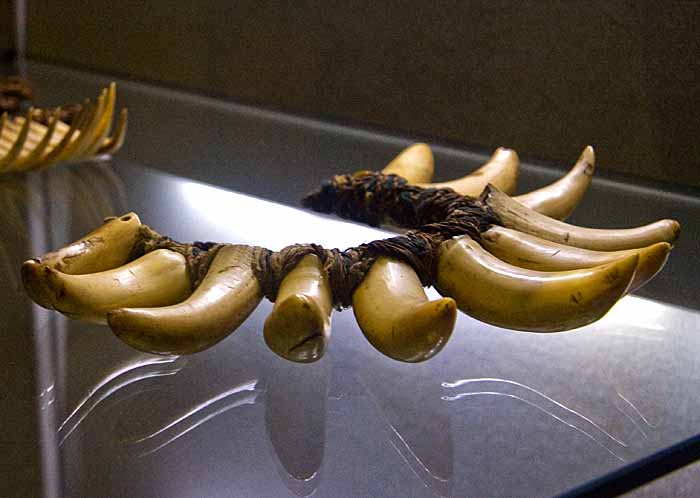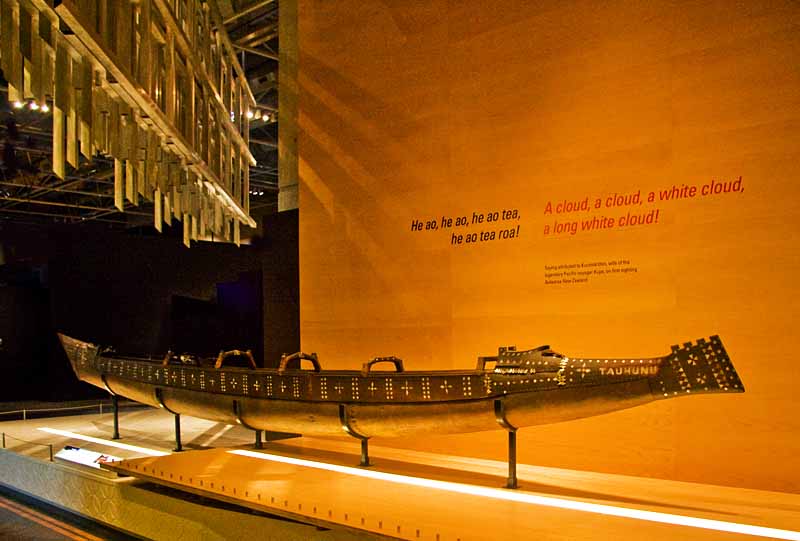A Trip to Australia and New Zealand
Wellington - Te Papa Museum

Captain Cook is usually credited with having introduced the word tattoo into the English language in the eighteenth century. During his exploratory voyages in the Pacific, he saw examples of it in the numerous islands that he visited. In Tahiti, Tonga, and Samoa it is called ta-tau and in the Marguesa Islands it is known as ta-tu. In New Zealand the Maori know it as ta-moko. Cook spelled it tattow in the report of his trip. The similarity of tattoo designs throughout Polynesia is another thread leading scholars to believe that the Maori came to New Zealand from that quarter of the Pacific Ocean. (Note the abstract tattoo design in the ritual mask above.)

The Maori believe that the origins of the tattoo are to be found in a love affair between a young man of this world and a young woman of the underworld. Only Maori of high social standing were permitted to be tattooed and men were more heavily tattooed than women. Traditional Maori tattooing is an extremely painful process involving a stone chisel that literally carves the flesh. The Maori believe that the head is the most important part of the body and that is where most of the tattooing is done, although some Maori tribes also tattoo other parts of the body. Always the tattoo tells a story and indicates rank with full face tattooing being reserved for the most important people in the community. Using a tattoo design improperly is an insult and unqualified persons who misuse these designs are shunned.
Many non-Maori people have fallen in love with the beauty of Maori ta-moko designs, but understandably are reluctant to actually carve their flesh with chisels. For that reason aficionados of body art are increasingly making a distinction between the words "tattoo" which punctures the skin and "ta moko" which cuts into it and carves the flesh below. Maori regard non-Maori appropriation of traditional ta-moko designs as being improper and often find their misuse as being either insulting or humorous depending on the meaning that they ascribe to that particular combination of curves and swirls. Because Maori ta-moko designs often incorporate information regarding genealogy, misuse of those designs is akin to identity theft. The issue is so important that tattoos based on a form of Maori pattern art called Kirituhi that is similar to traditional ta-moko designs, but does not include specific meaning that is significant to the Maori people is gaining favor for use as western body art.


